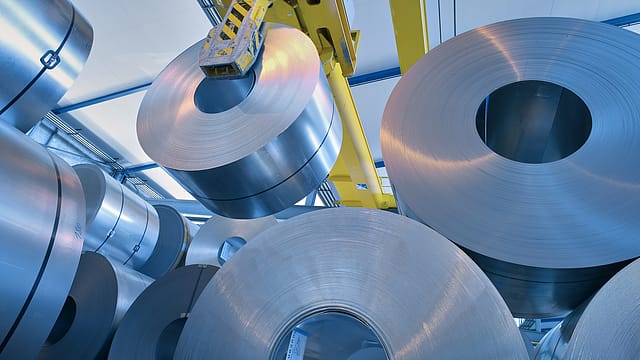Tata Steel to invest ₹1 lakh crore to double its steelmaking capacity
ADVERTISEMENT

Tata Steel's plan to double its capacity to 40 million tonne (MT) is expected to entail an investment of around ₹1 lakh crore, said industry experts. The company plans to complete the expansion by 2030. According to sources, the company prefers to grow the capacity organically rather than acquiring assets to achieve the target.
The expansion of its existing steelmaking facilities at Angul, Kalinganagar and Jamshedpur will be enough to double its capacity to 40MT a year. "Tata Steel's capacity enhancement at the premises of existing facilities will cost around ₹5,000 crore for a million tonne," said a steel industry analyst. The expansion of the Kalinganagar plant to 8 MT from 3 MT is now underway and it will incur a cost of around ₹25,000 crore.
"The current capacity in India of 20MT is going to be doubled during this decade," said N Chandrasekaran on Thursday in Jamshedpur, where Tata Steel has its largest plant of 10MT capacity. "Tata Steel has had the best-ever performance in its history, in terms of output and financial performance," he added.
January 2026
Netflix, which has been in India for a decade, has successfully struck a balance between high-class premium content and pricing that attracts a range of customers. Find out how the U.S. streaming giant evolved in India, plus an exclusive interview with CEO Ted Sarandos. Also read about the Best Investments for 2026, and how rising growth and easing inflation will come in handy for finance minister Nirmala Sitharaman as she prepares Budget 2026.
Including its capacities in the UK, the Netherlands and Southeast Asia, Tata Steel has 34MT steelmaking capabilities. The company, which struggled with heavy debt of over ₹1 lakh crore, has cut down its net debt by ₹41,910 crore, or 40%, in the last seven quarters since the outbreak Covid-19 in early 2020. The net debt stood at ₹62,869 crore. The focus on debt reduction will help the company to become fiscally prudent to begin its new investment cycle, said the analysts.
During the time of lockdowns, the company had remodelled its debt management plan and channelled the free cash flows to reduce financial liabilities. The priority of the company is now the repayment of its off-shore debts, said officials. The company has made ₹17,376 crore overall repayments in the nine months of this financial year. The net debt to EBITDA improved to below 1 and net debt to equity improved to 0.68 times.
Tata Steel spent ₹7,214 crore towards capital expenditure in April-December 2021 period and targets to increase it to a total of ₹10,000-12,000 crore by March 2022. Work on the pellet plant, the cold roll mill complex and the 5 million tonne expansion at Kalinganagar is progressing.
The steelmaker has posted a consolidated profit of ₹9,598 crore, which increased by 139%, in the December quarter. Recently, subsidiary Tata Steel Long Products has been declared as the winner for the acquisition of Neelachal Ispat Nigam Ltd. The acquisition will be financed by Tata Steel largely through internal accruals and bridge funding. It took over Bhushan Steel and Usha Martin's steel business in the recent past.
Along with the expansion, the company will need to increase its production from captive mines for raw materials -- iron ore and coking coal. It produces about 25% of its required coal from the captive mines, while it is fully secured when it comes to iron ore.
"The company targets to continue with 25% own coal and 75% imported coal," said TV Narendran, managing director and CEO, Tata Steel, recently. The iron ore production capacity is enough for covering the requirements until 2030. Tata Steel has also participated in the recent mine auctions and picked up 350MT reserves.
"We have about 450 MT of mines already available to us. It is enough to cater to our requirements. Besides, we will continue to participate in auctions," Narendran said. The company has already expanded iron mining capacity to produce 30-35 MT of steel a year. "We are expanding the mining capacity for 50 MT steel production," he added.
